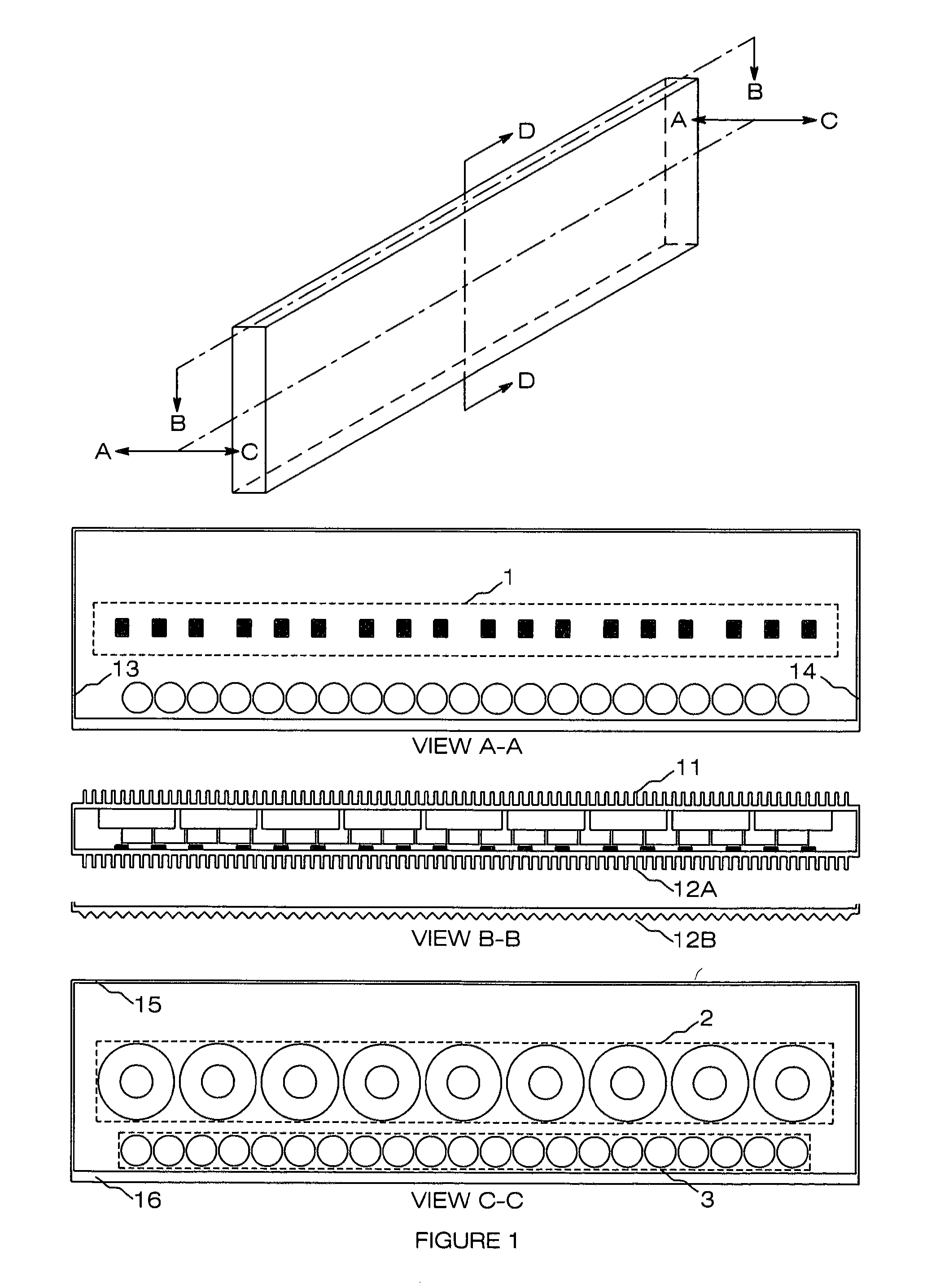Power converter with linear distribution of heat sources
a technology of power converters and heat sources, applied in the direction of lighting and heating apparatus, electric apparatus casings/cabinets/drawers, instruments, etc., can solve the problems of affecting the cost, performance and reliability of any power converter, generating heat by the semiconductor device, etc., to improve performance, enhance reliability, and reduce costs
- Summary
- Abstract
- Description
- Claims
- Application Information
AI Technical Summary
Benefits of technology
Problems solved by technology
Method used
Image
Examples
Embodiment Construction
[0014]A power converter design using discrete semiconductors and flat-form magnetic components will be described. This low power design is optimized for natural convection cooling. A high power design will next be described which uses semiconductor power modules and forced convection cooling. In both cases it will be demonstrated that with the invention, significant improvements can achieved in power converter performance and with a substantial reduction in power component costs.
[0015]FIG. 1 illustrates the preferred embodiment of the invention as a DC to 3-phase AC power converter or inverter. The power converter is housed in a six sided enclosure comprising front panel 11, rear panel 12A or 12B, top panel 15, bottom panel 16, and side panels 13 and 14. All panels, or sides of the enclosure, act as heatsinks for internal electrical components to transfer heat to ambient air outside of the enclosure. The power converter illustrated is optimized for natural convection but may also be...
PUM
 Login to View More
Login to View More Abstract
Description
Claims
Application Information
 Login to View More
Login to View More - R&D
- Intellectual Property
- Life Sciences
- Materials
- Tech Scout
- Unparalleled Data Quality
- Higher Quality Content
- 60% Fewer Hallucinations
Browse by: Latest US Patents, China's latest patents, Technical Efficacy Thesaurus, Application Domain, Technology Topic, Popular Technical Reports.
© 2025 PatSnap. All rights reserved.Legal|Privacy policy|Modern Slavery Act Transparency Statement|Sitemap|About US| Contact US: help@patsnap.com



